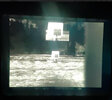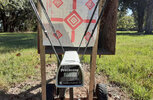berettaprofessor
Member
Picked up an AGM Thermal scope yesterday and like it. But immediately presented with a problem. Bore-sighted in daylight, which worked really well, put the shots on a 12X12 piece of paper at 50 yards, but having a bit of trouble zeroing further since I don't have the rifle locked in a stable rest. What do you recommend for thermal targets for daytime zeroing around 50 yards? Is there a cheap make-it-yourself work around?
Really digging the thermal. Beats the heck out of the cheaper NV scopes. I had a Sightmark Wraith 4-32 and just traded it off because I didn't like it.
Really digging the thermal. Beats the heck out of the cheaper NV scopes. I had a Sightmark Wraith 4-32 and just traded it off because I didn't like it.





